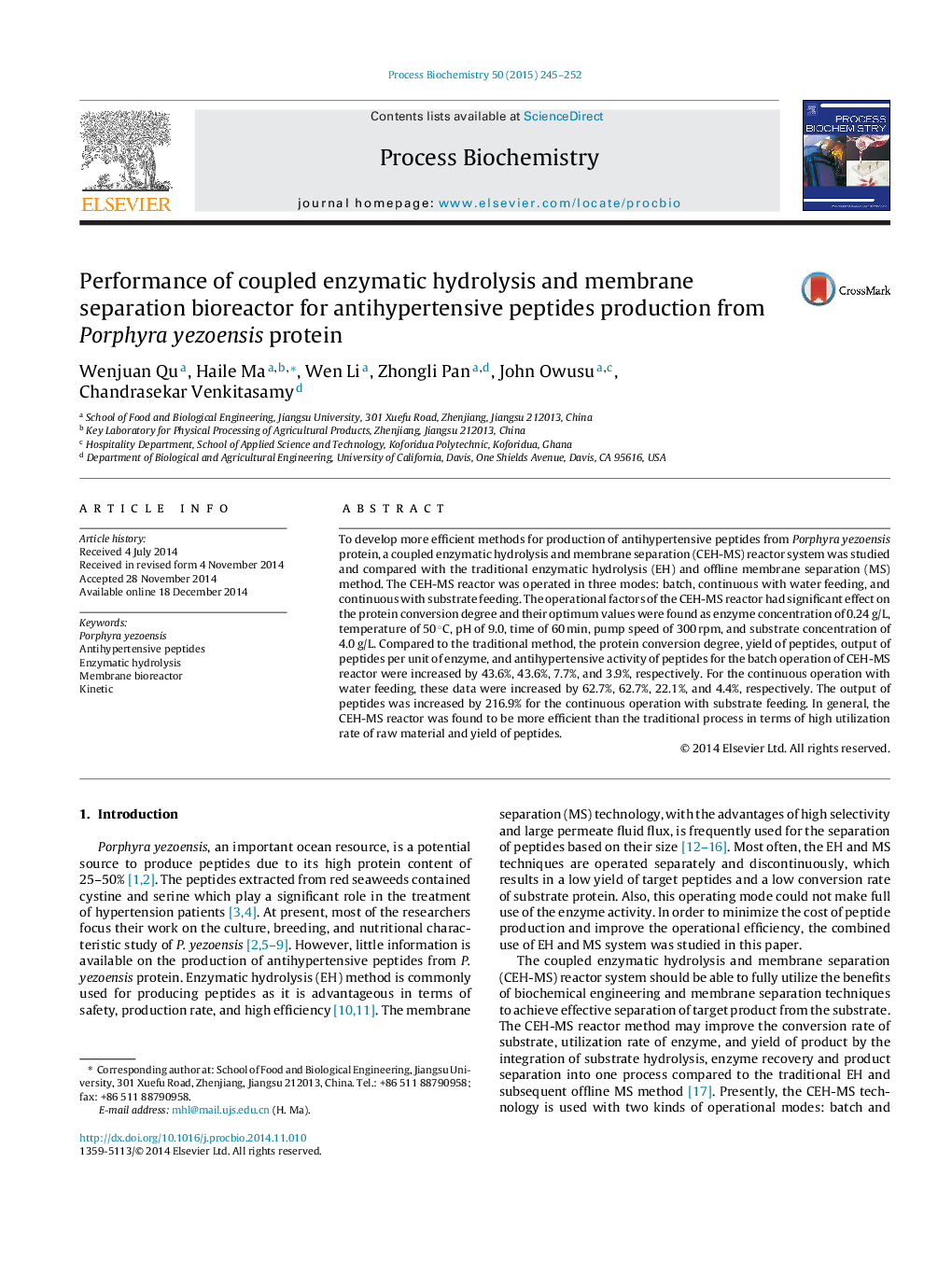| Article ID | Journal | Published Year | Pages | File Type |
|---|---|---|---|---|
| 34397 | Process Biochemistry | 2015 | 8 Pages |
•A novel CEH-MS reactor system was developed.•The CEH-MS method was found beneficial to produce antihypertensive peptides.•The batch and continuous operations with water feeding produced high yields.•The continuous operation with substrate feeding gave a high output per enzyme.•All three CEH-MS methods were more efficient than the traditional one.
To develop more efficient methods for production of antihypertensive peptides from Porphyra yezoensis protein, a coupled enzymatic hydrolysis and membrane separation (CEH-MS) reactor system was studied and compared with the traditional enzymatic hydrolysis (EH) and offline membrane separation (MS) method. The CEH-MS reactor was operated in three modes: batch, continuous with water feeding, and continuous with substrate feeding. The operational factors of the CEH-MS reactor had significant effect on the protein conversion degree and their optimum values were found as enzyme concentration of 0.24 g/L, temperature of 50 °C, pH of 9.0, time of 60 min, pump speed of 300 rpm, and substrate concentration of 4.0 g/L. Compared to the traditional method, the protein conversion degree, yield of peptides, output of peptides per unit of enzyme, and antihypertensive activity of peptides for the batch operation of CEH-MS reactor were increased by 43.6%, 43.6%, 7.7%, and 3.9%, respectively. For the continuous operation with water feeding, these data were increased by 62.7%, 62.7%, 22.1%, and 4.4%, respectively. The output of peptides was increased by 216.9% for the continuous operation with substrate feeding. In general, the CEH-MS reactor was found to be more efficient than the traditional process in terms of high utilization rate of raw material and yield of peptides.
